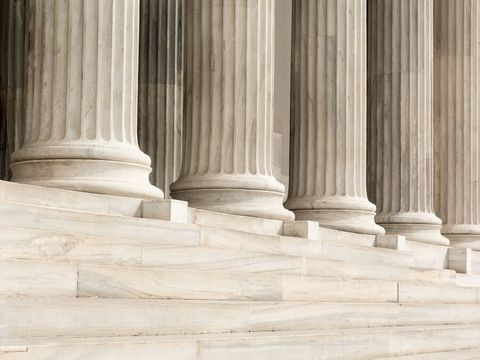Department of Energy Solicits Comments On Energy Efficiency Test Procedures for Battery Chargers
Client Alert | 2 min read | 05.11.20
The U.S. Department of Energy (DOE) issued a Request for Information (RFI) last week soliciting comments no later than June 3, 2020, on possible revisions to the energy efficiency regulations for battery chargers. Understanding how both the existing regulatory regime and any proposed changes will impact a company’s battery chargers and related products is an essential but often overlooked component of company compliance programs, and compliance failures can result in substantial civil penalties.
The Energy Policy and Conservation Act
As our Energy Efficiency and Appliance Standards Team has previously discussed here and here, DOE administers the Energy Policy and Conservation Act (EPCA) by setting mandatory appliance efficiency or conservation standards for over 60 covered products, including refrigerators, vacuums, many smart appliances, and of course battery chargers and external power supplies.
Each efficiency standard has two components: (1) a device-specific conservation standard and (2) an associated test procedure which the manufacturer must apply to demonstrate compliance with that conservation standard. Failure to comply with these standards is costly. DOE can seek penalties of up to $460 for each non-compliant unit sold or made available for sale, with up to a five-year look back.
EPCA compliance is generally the responsibility of either the manufacturer of a covered product or the importer of the product if the product was manufactured outside of the U.S. Retailers serving as importers of record would therefore assume responsibility for compliance and should pay close attention to these developments.
The Request for Information
DOE’s RFI seeks feedback on the regulations concerning test procedures for battery chargers covered by EPCA, meaning any charger that is capable of charging batteries for a consumer product, including chargers that may be embedded as components of other consumer products (i.e., where a device with some other primary use includes battery charging functionality).
In particular, the Department of Energy is interested in comments on:
- How to alter test procedures for battery chargers so that it lessens the burden on regulated industries;
- Whether there are viable test procedures for wireless chargers, most of which are not currently subject to energy efficiency standards;
- Possible testing procedures for testing battery chargers that are not shipped with the product they are intended to charge; and
- New or third-party developed test procedures that might more accurately capture a battery charger’s energy efficiency.
In 2018, DOE sought information on the emerging market for smart appliances with the purpose of ensuring that the agency, in pursuing its regulatory mission, did not inadvertently impede market development. As part of this RFI, DOE is also seeking feedback on whether and to what extent the battery charger test procedures affect the growth of the smart appliance market.
Comments responding to this RFI must be submitted no later than June 3, 2020.
Contacts
Insights
Client Alert | 5 min read | 12.12.25
Eleventh Circuit Hears Argument on False Claims Act Qui Tam Constitutionality
On the morning of December 12, 2025, the Eleventh Circuit heard argument in United States ex rel. Zafirov v. Florida Medical Associates, LLC, et al., No. 24-13581 (11th Cir. 2025). This case concerns the constitutionality of the False Claims Act (FCA) qui tam provisions and a groundbreaking September 2024 opinion in which the United States District Court for the Middle District of Florida held that the FCA’s qui tam provisions were unconstitutional under Article II. See United States ex rel. Zafirov v. Fla. Med. Assocs., LLC, 751 F. Supp. 3d 1293 (M.D. Fla. 2024). That decision, penned by District Judge Kathryn Kimball Mizelle, was the first success story for a legal theory that has been gaining steam ever since Justices Thomas, Barrett, and Kavanaugh indicated they would be willing to consider arguments about the constitutionality of the qui tam provisions in U.S. ex rel. Polansky v. Exec. Health Res., 599 U.S. 419 (2023). In her opinion, Judge Mizelle held (1) qui tam relators are officers of the U.S. who must be appointed under the Appointments Clause; and (2) historical practice treating qui tam and similar relators as less than “officers” for constitutional purposes was not enough to save the qui tam provisions from the fundamental Article II infirmity the court identified. That ruling was appealed and, after full briefing, including by the government and a bevy of amici, the litigants stepped up to the plate this morning for oral argument.
Client Alert | 8 min read | 12.11.25
Director Squires Revamps the Workings of the U.S. Patent Office
Client Alert | 8 min read | 12.10.25
Creativity You Can Use: CJEU Clarifies Copyright for Applied Art
Client Alert | 4 min read | 12.10.25
Federal Court Strikes Down Interior Order Suspending Wind Energy Development





